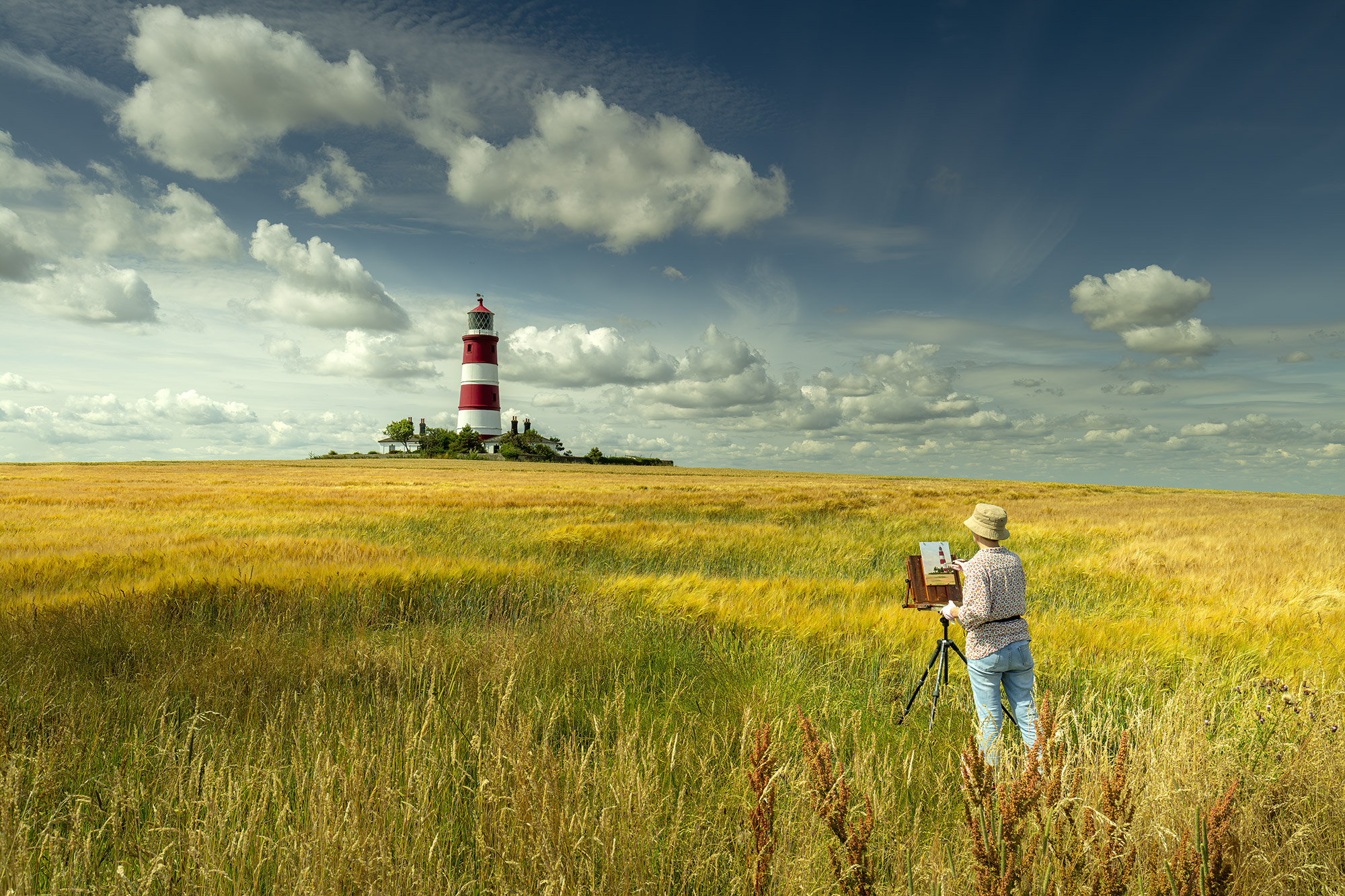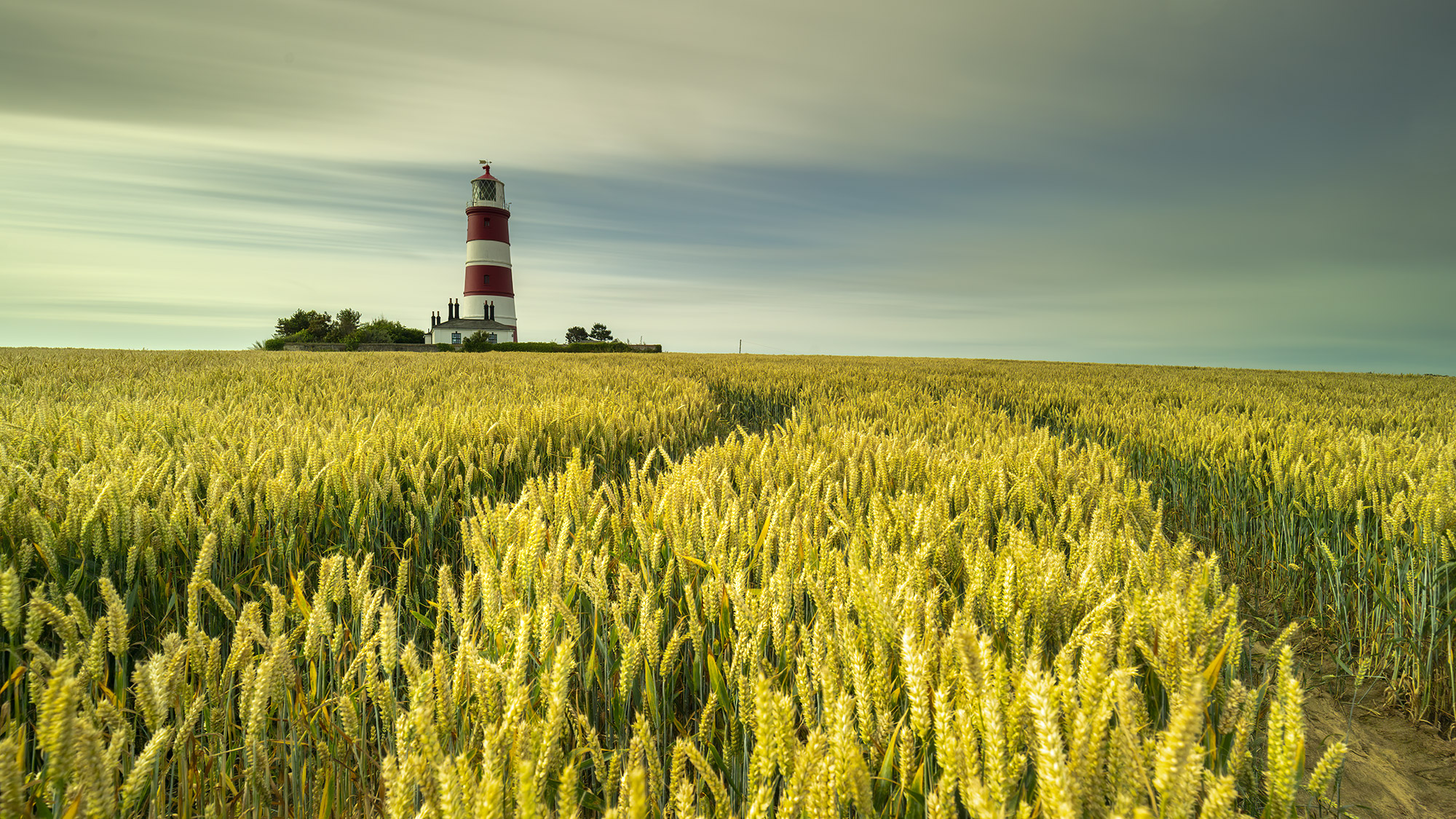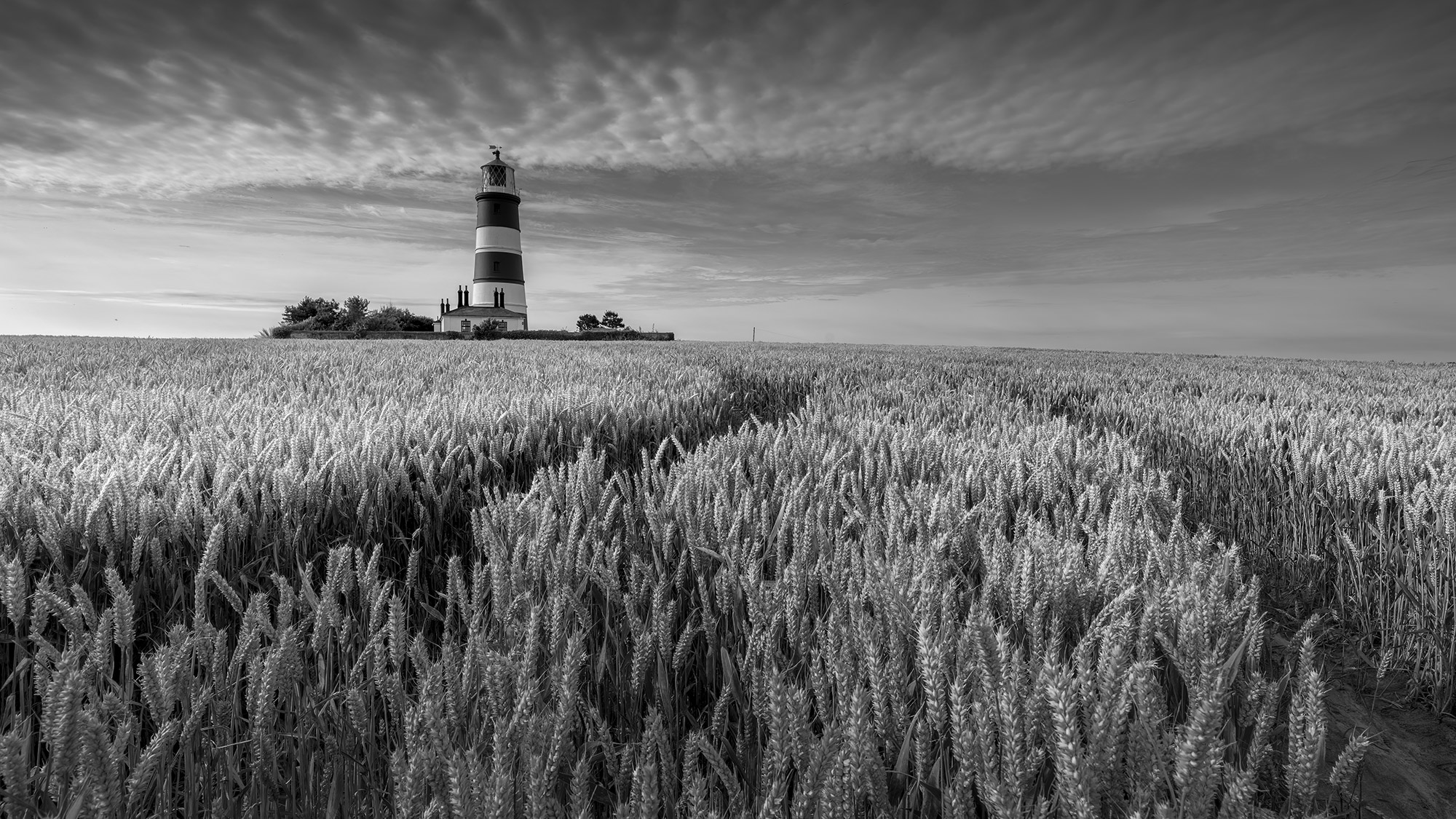Happisburgh Lighthouse Landscape Photography
In this video entitled, “Happisburgh Lighthouse Landscape Photography” I create an image with the perfect foreground interest. I think!
A little bit about the video on Happisburgh Lighthouse Landscape Photography
During a short road trip to Norwich a couple of weeks ago, I took a few stunning images (even though I say so myself) of Happisburgh Lighthouse. While searching for compositions, I noticed something that I thought could be a potential award winner for the category of “Best Foreground Interest”. Imagine if that was even a thing! 😁
The final image in the video outshone all of the images I had already taken, which at that point, I was already excited about. I hope you like the image…

History of Happisburgh Lighthouse
Happisburgh Lighthouse: A Historical Beacon on the Norfolk Coast!
Happisburgh Lighthouse, situated on the rugged and picturesque Norfolk coast of England, stands as a testament to maritime history, human ingenuity, and the ever-changing forces of nature. With a history spanning over two centuries, this iconic landmark has guided mariners through treacherous waters, weathered the erosion of its coastal foundation, and become a symbol of resilience for the local community. From its humble beginnings as a wooden tower to its current status as one of the oldest operational lighthouses in the United Kingdom, the history of Happisburgh Lighthouse is a fascinating journey through time.
Chapter 1: Origins and Construction (Late 18th Century):
The origins of Happisburgh Lighthouse can be traced back to the late 18th century when increasing maritime trade and navigation along the North Sea coast necessitated improved aids to guide ships safely. In 1790, Trinity House, the organization responsible for managing lighthouses and maritime navigation, recognized the need for a navigational beacon at Happisburgh. A simple wooden tower was erected, crowned by a coal-fired beacon that emitted a guiding light for ships navigating the coastal waters.
Chapter 2: Evolution and Upgrades (19th Century):
As technological advancements in lighthouse construction and illumination emerged, Happisburgh Lighthouse underwent significant transformations in the 19th century. In 1863, the original wooden tower was replaced by a robust brick structure, a red and white striped tower that remains an iconic feature to this day. This upgrade was not merely cosmetic; the new lighthouse was equipped with a Fresnel lens, a cutting-edge optical apparatus that intensified and directed the light beam, enhancing the lighthouse’s effectiveness in guiding ships safely.
Chapter 3: Guiding Mariners Through Wars and Peace (20th Century):
The 20th century ushered in a new era for Happisburgh Lighthouse. It witnessed the impacts of two World Wars, during which the lighthouse played a vital role in guiding ships through the tumultuous waters of conflict. Advances in automation during the mid-20th century led to changes in lighthouse operations across the UK, and Happisburgh Lighthouse was no exception. In 1988, the lighthouse transitioned to an automated system, marking the end of its reliance on full-time lighthouse keepers.
Chapter 4: Erosion Threat and Preservation Efforts:
One of the most defining aspects of Happisburgh Lighthouse’s history is its ongoing battle against coastal erosion. Perched perilously close to the edge of the eroding cliffs, the lighthouse has faced a constant threat of toppling into the sea. The local community, recognizing the historical and cultural significance of the landmark, banded together to form the Happisburgh Lighthouse Trust. This trust has been instrumental in fundraising, implementing sea defences, and raising awareness about the erosion threat, showcasing the power of community-driven preservation efforts.
Chapter 5: Beacon of Resilience and Cultural Symbol:
Happisburgh Lighthouse stands not only as a navigational aid but also as a symbol of human resilience in the face of natural challenges. Its history intertwines with the stories of the individuals who have cared for it, the mariners it has guided, and the community that has rallied to protect it. The lighthouse’s distinct appearance against the backdrop of the Norfolk coastline has inspired artists, photographers, and writers, contributing to its cultural significance beyond its functional purpose.
Chapter 6: Maintaining Tradition in the Modern Era:
In an age of GPS navigation and advanced maritime technology, Happisburgh Lighthouse continues to shine its light as a working navigational aid. Visitors from near and far have the opportunity to climb its spiral staircase, gaining panoramic views of the surrounding landscape and a glimpse into the history of lighthouse keeping. The lighthouse’s role as a tourist attraction, operational aid, and historical landmark showcases the harmonious coexistence of tradition and progress.
Conclusion:
The history of Happisburgh Lighthouse is a tapestry woven with threads of navigation, innovation, erosion, and community determination. From its modest beginnings as a wooden tower to its enduring role as a red and white striped beacon, this lighthouse has witnessed the passage of time and the ever-changing tides of the sea. Its story serves as a reminder of the importance of preserving historical landmarks, supporting community efforts, and recognizing the resilience of both human endeavour and the natural world. As Happisburgh Lighthouse stands steadfast against the forces of erosion, it embodies the spirit of continuity, guiding ships and inspiring generations for years to come.
 I was quite surprised at how awesome this location looks in Black & White
I was quite surprised at how awesome this location looks in Black & White
Interesting facts
- Oldest Working Lighthouse: Happisburgh Lighthouse is one of the oldest working lighthouses in the UK. It has been providing guidance to mariners for more than two centuries, making it a historically significant landmark.
- Red and White Stripes: The lighthouse’s iconic red and white stripes are not just for decoration. They serve an essential purpose in making the lighthouse more visible to ships at sea during daylight hours.
- Erosion Threat: The lighthouse is famously threatened by coastal erosion. The erosion of the cliffs on which the lighthouse stands has caused it to be at risk of collapsing into the sea. The tower’s precarious position has attracted attention and concern from people around the world.
- Local Community Involvement: The Happisburgh Lighthouse Trust was formed by the local community to support the lighthouse’s maintenance and preservation. The trust plays a crucial role in fundraising, managing tours, and ensuring the lighthouse’s ongoing operation.
- Visitor Tours: The lighthouse is open to the public for guided tours during certain times of the year. Visitors can climb the tower’s spiral staircase to enjoy panoramic views of the surrounding countryside and coastline. The tours provide insights into the history and challenges faced by the lighthouse.
- Automation: The lighthouse was automated in 1988, marking the end of its reliance on full-time lighthouse keepers. Automation is a common practice in modern lighthouse operations as technology has advanced.
- Unique Fresnel Lens: The lighthouse once housed a Fresnel lens, a specialized lens design that enhances the visibility of light signals. While the original Fresnel lens is no longer in use, it remains a testament to the lighthouse’s historical significance.
- Artistic Inspiration: Happisburgh Lighthouse has been a subject of inspiration for artists, photographers, and writers. Its striking appearance against the backdrop of the coastline and dramatic cliffs has made it a favourite motif for creative works.
- Cultural Significance: The lighthouse is an important cultural landmark for the local community, symbolizing the resilience of the people in the face of natural challenges and the importance of preserving historical heritage.
- Conservation Efforts: The ongoing conservation efforts to protect the lighthouse from coastal erosion showcase the dedication of the community to maintaining this piece of history for future generations.
Happisburgh Lighthouse’s history, unique appearance, and its role in the local community’s efforts to preserve it make it a fascinating and significant landmark in Norfolk, England.





► WORKSHOPS
► ABOUT ME
► MY GEAR
► FACEBOOK
► YOUTUBE
► INSTAGRAM

Tell us about your thoughtsWrite message